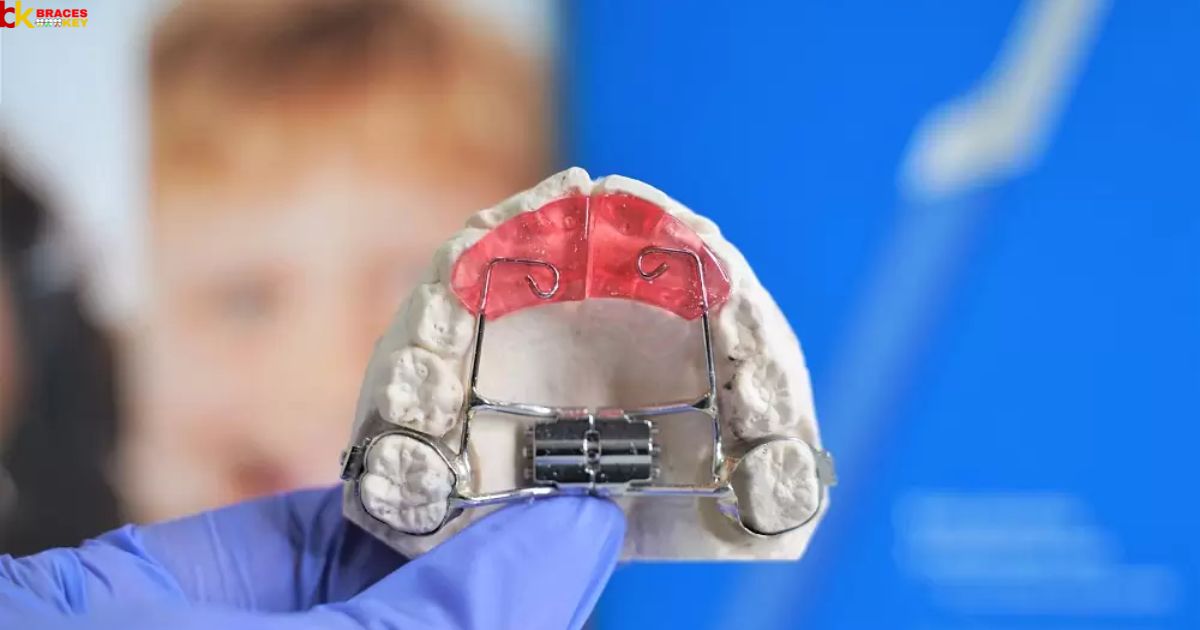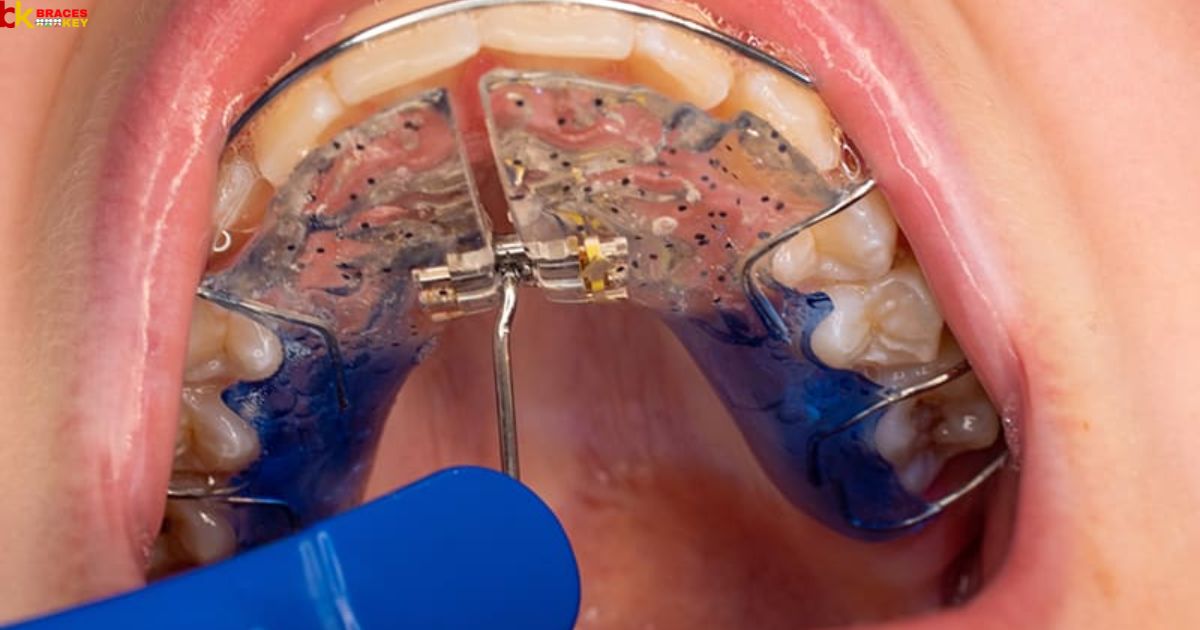Are you curious about the duration of wearing an expander before getting braces? Look no further! In this article, we will explore the factors that affect the length of time one needs to wear an expander before braces. As an orthodontic treatment, expanders play a crucial role in creating space for proper alignment of teeth. Understanding how long you may need to wear an expander can provide clarity and peace of mind during your orthodontic journey. By considering age, the type of expander used, and the individual’s specific dental needs, orthodontists can determine the ideal duration for wearing an expander. So, let’s dive in and discover the key factors that influence the length of time before transitioning to braces.
Key Takeaways
- The duration of wearing an expander before braces can vary depending on factors such as the age of the patient, severity of the orthodontic issue, patient compliance, individual response to treatment, and the orthodontist’s evaluation.
- Younger patients generally have better outcomes with expanders as their bones are still growing and malleable, while older patients may require a longer duration as their bones have already fused and are less responsive.
- Expanders can help shorten the braces timeline by achieving maxillary expansion, bite correction, improved stability, eliminating the need for tooth extraction, and reducing the risk of relapse after braces.
- Regular maintenance and adjustments of the expander are crucial for its effectiveness, including daily cleaning to remove food particles and bacteria buildup, and activation as instructed to gradually widen the palate.
Factors Affecting Expander Duration

The duration of wearing an expander before getting braces is influenced by various factors. One of the key factors is the age of the patient. Younger patients may require a longer period of wearing an expander as their bones are still growing and more malleable. The severity of the orthodontic issue also plays a role in determining the duration of expander wear. Cases with more significant dental or jaw misalignments may require a longer time to achieve the desired results.
Additionally, patient compliance is crucial. Strictly following the orthodontist’s instructions and wearing the expander as directed can help expedite the treatment process. Lastly, every patient is unique, and their response to treatment can vary. This means that the duration of expander wear may differ from one individual to another.
Age Considerations for Wearing an Expander
An important factor to consider when determining the duration of wearing an expander before braces is the patient’s age. Age plays a significant role in the success of orthodontic treatment with expanders. Younger patients, typically between the ages of 7 and 11, tend to have better outcomes with expanders because their bones are still growing and more malleable. This allows the expander to work more effectively in widening the upper jaw and creating space for the permanent teeth.
Older patients, on the other hand, may require a longer duration of wearing an expander before braces because their bones have already fused and are less responsive to treatment. It is important for orthodontists to carefully evaluate the patient’s age and skeletal development when determining the optimal duration for wearing an expander before proceeding with braces.
How Expanders Shorten the Braces Timeline

When considering the duration of wearing an expander before braces, expanders have been shown to significantly shorten the timeline for orthodontic treatment. Here are three ways in which expanders expedite the braces process:
- Maxillary Expansion: By widening the upper jaw, expanders create more space for crowded teeth to align properly. This eliminates the need for tooth extraction, which can prolong the braces timeline.
- Bite Correction: Expanders can also correct bite issues, such as overbite or crossbite, by gradually adjusting the position of the upper and lower jaws. This helps align the teeth more efficiently during the subsequent braces treatment.
- Improved Stability: By expanding the upper jaw, expanders enhance the stability of the orthodontic correction. This reduces the risk of relapse after braces, allowing for a shorter and more successful treatment overall.
With expanders playing a crucial role in expediting orthodontic treatment, it is important to understand how to care for and clean them properly.
How to Care for and Clean an Expander
Proper maintenance of an expander includes regular cleaning and care. By following a few simple steps, you can ensure that your expander remains in good condition and functions effectively. Firstly, it is important to clean your expander after every meal using a soft toothbrush and mild, non-abrasive toothpaste. Gently brush the expander, paying close attention to the areas where food particles may accumulate. Rinse thoroughly to remove any remaining toothpaste.
Additionally, it is essential to maintain good oral hygiene by brushing and flossing regularly. This helps prevent plaque buildup and reduces the risk of gum disease. Lastly, it is crucial to attend regular check-ups with your orthodontist to ensure that the expander is properly adjusted and functioning as intended. By following these care and cleaning guidelines, you can keep your expander in optimal condition and achieve the desired results in a timely manner.
Potential Discomfort During Expander Treatment
During the course of expander treatment, patients may experience some discomfort due to the gradual expansion of their dental arches. This discomfort is normal and temporary, and it can vary from person to person. Here are three potential discomforts that patients may experience during their expander treatment:
- Pressure and soreness: As the expander applies pressure to the dental arches, patients may feel some discomfort and soreness. This sensation is similar to the feeling of tightening braces. It is important to remember that this discomfort is a sign that the expander is working to gradually widen the dental arches.
- Speech difficulties: Some patients may experience temporary speech difficulties while wearing an expander. This is because the device occupies space in the mouth and can affect tongue movement. With practice and time, patients usually adapt and regain their normal speech patterns.
- Irritation and sore spots: The expander can occasionally cause mild irritation or sore spots on the gums and soft tissues of the mouth. This can be managed by using wax or dental silicone to cushion the affected areas. Regular oral hygiene practices and saltwater rinses can also help alleviate discomfort.
It is important for patients to communicate any discomfort they experience to their orthodontist, who can provide guidance and make any necessary adjustments to ensure a comfortable treatment process.
Importance of an Orthodontic Consultation

To ensure a successful orthodontic treatment, it is crucial to schedule an orthodontic consultation. This initial step allows the orthodontist to assess your oral health and determine the best course of treatment for your specific needs. During the consultation, the orthodontist will conduct a thorough examination of your teeth, jaws, and facial structure, using various diagnostic tools such as x-rays, photographs, and impressions. They will also discuss your concerns and goals for treatment.
This consultation is an opportunity for you to ask questions, learn about the different treatment options available, and understand the potential benefits and risks associated with each option. By obtaining a comprehensive understanding of your orthodontic needs, the orthodontist can create a personalized treatment plan that will achieve the desired results. Now, let’s delve into the different types of expanders used before braces.
Types of Expanders Used Before Braces
Before discussing the types of expanders used before braces, it is important to understand how frequently these devices are typically worn. Expanders are orthodontic appliances designed to create space in the mouth and correct issues such as overcrowding or a narrow palate. They are usually worn for a specific duration, which can vary depending on the patient’s needs and the severity of the dental condition. Here are three common types of expanders used before braces:
- Rapid Palatal Expander (RPE): This type of expander is used to widen the upper jaw and correct a narrow palate. It has a screw that is turned daily to gradually expand the device.
- Hyrax Expander: Similar to the RPE, the Hyrax expander is also used to widen the upper jaw. It consists of bands that are bonded to the teeth and a screw that is activated to create gradual expansion.
- Quad Helix Expander: This expander is used to correct crowding and expand the arches. It has four helical springs that apply gentle pressure to widen the dental arches.
These expanders, when used before braces, help create the necessary space for proper alignment and positioning of the teeth, ultimately achieving a more functional and aesthetically pleasing smile.
Expander Maintenance and Adjustments
Expander maintenance and adjustments are crucial aspects of orthodontic treatment that ensure the effectiveness and proper functioning of the device. Regular maintenance and adjustments help to achieve the desired results and prevent any complications during the treatment process. Here are some important points to consider:
| Maintenance | Frequency | Purpose |
|---|---|---|
| Cleaning | Daily | Remove food particles and bacteria buildup |
| Activation | As instructed | Gradually widen the palate to create space for teeth |
| Check-ups | Every 4-6 weeks | Assess progress and make necessary adjustments |
It is important to follow the instructions given by your orthodontist for proper maintenance and adjustment of the expander. By doing so, you can ensure that the expander works effectively and contributes to the success of your orthodontic treatment. Remember, regular maintenance and adjustments are key to achieving the desired outcome and a healthy, beautiful smile.
Retainer Use After Expander Treatment
After completing expander treatment, the use of a retainer is essential for maintaining the results and preventing any relapse. Here are three important reasons why a retainer is necessary:
- Stabilization: The retainer helps stabilize the teeth and jaw in their new positions. It holds them in place, allowing the surrounding tissues and bones to adapt and support the changes made during the expander treatment.
- Prevention of relapse: Without a retainer, there is a risk of relapse, where the teeth gradually move back towards their original positions. Wearing a retainer on a regular basis helps ensure that the teeth remain in their corrected alignment, preventing any regression.
- Long-term support: The use of a retainer provides long-term support for the newly expanded palate and aligned teeth. By wearing the retainer as instructed by your orthodontist, you can maintain the achieved results and enjoy a beautiful and functional smile for years to come.
FAQ’s
What Is a Palatal Expander?
A palatal expander is a dental device used to widen the upper jaw. It is typically worn for a period of time before braces are applied. The duration of wear varies depending on individual needs and treatment plans.
Will Wearing an Expander Before Braces Hurt?
Wearing an expander before braces may cause mild discomfort initially but should not be painful. The duration of wearing an expander varies depending on the individual’s needs, as determined by the orthodontist.
Can Adults Wear Expanders Before Getting Braces?
Yes, adults can wear expanders before getting braces. Expanders are orthodontic devices that can be used to widen the upper jaw to create more space for crowded teeth. The duration of wearing an expander before braces varies depending on individual needs and treatment plans.
How Long Does the Expander Treatment Typically Last?
The duration of expander treatment varies based on individual circumstances, such as the severity of the orthodontic issue. Typically, the expander may need to be worn for several months before braces are applied.
Are There Any Alternatives to Using an Expander Before Getting Braces?
There are alternative treatment options available for individuals who do not wish to use an expander before getting braces. These alternatives can be discussed with an orthodontist who can provide personalized recommendations based on the specific needs of the patient.
Conclusion
In conclusion, the duration of wearing an expander before braces can vary depending on individual factors such as age and the specific orthodontic treatment plan. However, by using expanders, orthodontists can help shorten the overall timeline for braces treatment. It is important to properly care for and clean the expander to ensure its effectiveness. While there may be some discomfort during the treatment, an orthodontic consultation can address any concerns and provide the best course of action. Learn more “Amani Braces Video Key Twitter”








